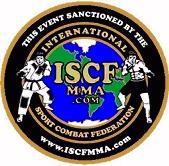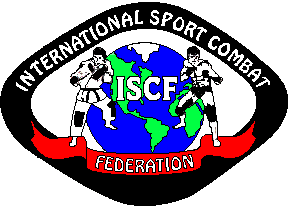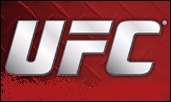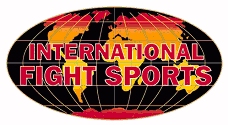
ISCF HOME- ISCF MMA NEWS- ISCF EVENTS - ISCF RANKINGS - ISCF SANCTIONING - ISCF RULES - WEIGHTS - GYMS - JOIN - CONTACT - PAST ISCF CHAMPIONS
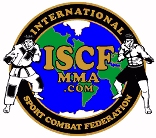
The ISCF Mission For
Mixed Martial Arts...
"Safety, Credibility, Fairness,
Recognition, Support & Unification
of Mixed Martial Arts Around The
World"
"The goal of the International Sport
Combat Federation is to regulate safe and fair rules and regulations and help
provide exposure and opportunities for local, regional, national and
international competition among amateur and professional mixed martial arts
fighters, trainers, promoters and officials. We will, through adherence to and
enforcement of these rules and regulations, strive to make competitive mixed
martial arts fighting a safe and fair sport as we continue to help bring
exposure to and enhance the present as well as the future of the sport we serve,
Mixed Martial Arts."
Steve
Fossum
President International Sport Combat Federation

_________________________________________
WHAT IS THE ISCF?
The
ISCF was the first ever
Sanctioning/Regulatory Body for Mixed Martial Arts (MMA) and currently
the Largest Neutral Sanctioning Body (In terms of number of sanctioned
events) in the World. Other than the annual
ISCF Amateur World Classic
(The
Golden Gloves of MMA)
The ISCF
does not Promote events and is NOT a Promotional Company.
The ISCF is a "Sanctioning Body" for
Mixed Martial Arts (MMA) events just like other sanctioning bodies for
fight sports (Kickboxing: IKF, ISKA, WKA, USKBA etc. - Boxing: WBC, IBF, WBC
etc.).
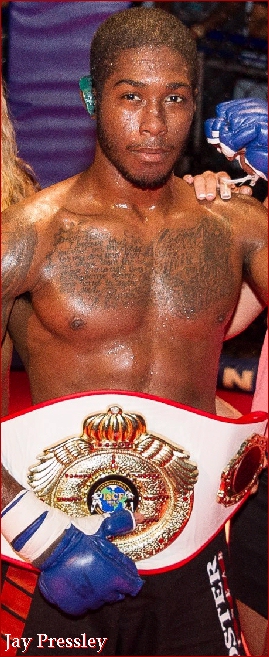
When the ISCF is called
upon to
SANCTION
an event, the name of the event does not change.
In fact, very little does
change. The ISCF works with each Promoter
and or Promotional Company
individually.
The ISCF assigns and
approves all event officials that have been trained and certified as ISCF Officials.
ISCF RULES
The
ISCF is sometimes asked to follow the
rules and requirements of a jurisdictions Athletic Commission of the region the
event is promoted in.
If so, some ISCF Rules and Regulations may vary to meet the
requirements of the State or jurisdiction of the event.
ISCF TITLE BOUTS
The ISCF, like other sanctioning bodies for fight sports
(Kickboxing: IKF, ISKA, WKA, USKBA etc. - Boxing: WBC, IBF, WBC etc.),
do offer ISCF Titles.
However the difference
of the ISCF Titles are many. To begin
with, every ISCF Title won is located
either on an up to date Rankings
Page or, if the title has been retired, it is listed on our
Past Champions Page.
ISCF Titles can be contended for on ANY
ISCF Sanctioned MMA Event around the world
regardless of the Promoter or
Promotional Company.
Many Promoter or Promotional
Companies host their own titles, however since the ISCF supports and represent MMA as a whole, the ISCF titles are known as a neutral title for MMA.
ISCF RANKINGS
The
ISCF
Rankings are from a neutral opinion of MMA Associates around the
world. Any MMA fighter is allowed to join the ISCF rankings at
a "1 Time" fee of $25.00. (Pro & Amateur Rankings)
The ISCF
Rankings provide a neutral site where other event promoters can seek
out potential fighters for their events. Better yet is the ease of contacting
these fighters since the ISCF Rankings include phone numbers when
provided by the fighters. This alone is a great assist to any fighter who is
serious about competing in MMA. In addition, even promoters who may not choose
to sanction their events with the ISCF
visit the ISCF Ranking pages looking for fighters
for their events. The fighters ranked in the ISCF Rankings
are not ISCF MMA Fighters. They are MMA
Fighters! They can fight on ANY MMA Event whether sanctioned by the ISCF or not.
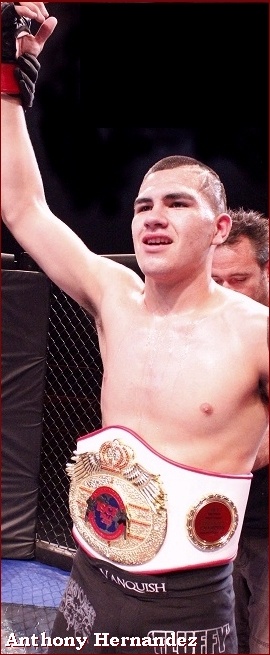
WORLDWIDE EXPOSURE
In
addition to a Neutral Ranking Structure for the MMA, the ISCF has other things to offer ISCF MMA Promoter's and their
Promotional Companies.
All ISCF Sanctioned events will have a Pre
and Post Press Releases on the ISCF News Pages. For more exposure of an
ISCF Sanctioned event, all ISCF Sanctioned events are listed on the
ISCF
Upcoming Events Page. ISCF
Sanctioning comes with much more than just "Letters and a logo for an event
poster..." ISCF Sanctioning means
more exposure to the Promoter and their Promotional Companies event.
ISCF Sanctioning comes
with much more than just "Letters and a logo for your poster..."
ISCF Sanctioning means more exposure
to the Promoter and or Promotional
Companies events as well from everything noted above.
To see a basic outline of what ISCF
Sanctioning includes Click
Here.

THE HISTORY OF THE
ISCF
International Sport Combat Federation
The idea of the name, International Sport Combat Federation ( ISCF) first started out as an event "Promotional Company" for cage fighting or as it was called at the time, No-holds-barred fighting events. The name was created by Nick Carroll and Jiro Shiroma of Arizona, USA. They originally approached the IKF, International Kickboxing Federation to design an ISCF title belt from a basic logo design created by Gilbert Corral. It was during this time that Carroll and Shiroma discussed with IKF President Steve Fossum (Right) the idea of the IKF regulating their events so their events would have neutral and fair officials. After weeks of discussing the possibility of it, they decided it best to have the IKF create a completely separate organization that regulated the MMA style of fighting, separate from Stand-Up Kickboxing that the IKF Regulated.
The IKF had already had MMA style bouts on several of their IKF Sanctioned events, but it was clear to Fossum that it would seem ridiculous to have a Kickboxing Sanctioning Body regulate this new sport. It would be like the IKF who sanctions American Football say they were going to now sanction Basketball under the NFL name.
With this understanding in mind, all three of them agreed that there was a growing need to sanction this new sport with its own set of rules and regulations, separate from kickboxing. Knowing the success of the IKF Carroll and Shiroma agreed that like the IKF, under Fossum's leadership the organization could grow while they instead, could focus on their event promotional company.
Fossum's desire was to build the ISCF as he had with the IKF, bigger, better and an organized "Sanctioning" organization for Mixed Martial Arts. Much like the IKF had done for Kickboxing. So the decision was made and in May of 1999, the International Sport Combat Federation - ISCF - was formed as the first neutral, non promoting Regulatory - Sanctioning Body for the Mixed Martial Arts (MMA).
Prior to this time, MMA event promotional companies had their own officials. As a sister organization for Mixed Martial Arts to the IKF, International Kickboxing Federation the ISCF neutrally regulates safe and fair rules and regulations and helps provide exposure and opportunities for local, regional, national and international competition among amateur and professional mixed martial arts fighters, trainers, promoters and officials.
With all eager to see the ISCF grow the decision was easy and Fossum and his staff took over the ISCF name and went to work.
The first step was to have a logo created that was similar to the IKF logo. So Fossum contracted with Foster Graphics (The same design firm that designed the new IKF logo) to design the "First" ISCF logo (Below) and the true beginning of the ISCF had taken shape.
IKF President Steve Fossum and his staff soon went to work on building the ISCF much the same as the IKF structured with an active website, www.ISCFMMA.com that included Structured Rankings, updated News Page and Upcoming Events Page.
Adding the ISCF to the workload around the IKF office was a chore in itself. To assist in it's development, Augusta Georgia Promoter Mike Carlson. (Pictured Left & Right) Carlson became the ISCF's Director Of Operations.
Carlson's work included the organizing of many mixed martial arts promotions. In one of those events, Din Thomas (of Team Rival, Pictured with ISCF World Title Belt at Left with Carlson) defeated Jens "The Pulverizer" Puiver (Team Extreme) by heel hook at :35 seconds of round 2 to win the first ever ISCF Pro WORLD Title on August 26th, 2000, at the Augusta-Richmond County Civic Center in Augusta, Georgia, USA.
Carlson was a big help refining the ISCF rules and regulations along with promoting his own events, "Winter Wars" and the "Fall Brawl". Eventually Carlson's legal career demanded more of his time and he had to resign from the position in the mid 2000's.
By 2005 the ISCF was still the only sanctioning body solely dedicated to sanctioning Mixed Martial Arts around the World and had been since it was started. There were tons of "Promotional Companies" but no actual "Sanctioning Bodies for MMA. Over the next several years the ISCF staff saw exactly what they did not want to do with MMA in aligning it under the IKF Kickboxing banner. However others saw no issue with it as "Kickboxing, Muay Thai" and even "Boxing" sanctioning bodies started sanctioning MMA. This of course as previously noted was like the NFL (National Football League) sanctioning Auto Racing..
By the end of 2005 the ISCF was sanctioning an average of 30-40 Pro and amateur MMA events a year. However, as many reading this know, 2006 was the beginning of the MMA BOOM!
In 2006, the UFC Promotional Company made MMA a more recognized sport with a TV deal with Spike TV. The show was a great success and almost overnight, the sport of MMA Exploded in the publics eye in the United States. Because of the sports popularity and the need for safety and fairness through "Sanctioning" of the sport throughout the USA, ISCF's number of sanctioned events grew as well. Within 18 months of the UFC/Spike TV deal the ISCF went from sanctioning 30-40 events a year to over 300. This number eventually grew near the 400 mark and continues to grow today.
Today the ISCF continues to be the largest MMA Sanctioning body in the World for Mixed Martial Arts.

ISCF
AROUND THE
WORLD
On September 5th, 2009 Brigade Command and the Multi National Corps - Iraq approved the first ever Sanctioned Pro/Am Mixed Martial Arts event for the 25th Infantry Division. The ISCF sent an officials team to sanction the event, "A Fight Night For Heroes" in Mosul, Kuwait, Iraq. The fight card featured 13 amateur and 3 pro bouts of active duty Military fighters. Along with the ISCF, the event was made possible by Armed Forces Entertainment, Xtreme Couture MMA, Federal Express, Combat Sports International, Club Ju Jitsu, The Fight Party, D&D;Productions and Casca-Grossa. The ISCF Event Representative was Andy Foster (Right - Center) who was at the time the Executive Director of the Georgia Athletic Commission.
The ISCF has sanctioned MMA in many places which includes states where MMA was not an accepted sport as well as several that use MMA Sanctioning Bodies such as the ISCF to oversee all aspects of an event. Since its beginning the ISCF has experienced tremendous growth and is today the Largest Sanctioning Body for full contact, amateur and professional Mixed Martial Arts in the world.
As of December 2011, the ISCF had sanctioned events and or ISCF Title bouts in Georgia, Tennessee, Missouri, Nevada, Idaho, Louisiana, Virginia, Washington DC, Oklahoma, New Jersey, Wyoming, South Dakota, Montana, Nebraska, Minnesota, Wisconsin, Iowa, Illinois, Indiana, Alabama, Arkansas, North Dakota, Michigan, Massachusetts, Kansas, Colorado, Arizona, New Mexico, Texas, Florida, Ohio, Connecticut, South Carolina, North Carolina, Pennsylvania, and California.
However the ISCF is also very active outside the USA as well sanctioning events in Canada, Mexico, England, Scotland, Wales, Australia, India, Iran, South Africa and as noted above, Iraq.

ISCF's
COMPETITION
Many so called Sanctioning Bodies claim to be an MMA sanctioning body but don't offer a fraction of what the ISCF offers event promoters from upcoming event listing on an events page, pre and post press releases on the ISCF News page and as of this day, the ISCF is still the only MMA Sanctioning body with both Professional and Amateur Mixed Martial Arts Rankings.
Many of these other sanctioning bodies also show an obvious conflict of interest on their events. Many sanction their own events while also letting promoters pick their own officials as long as the promoter pays them what is called a "Use of Letters Fee" or "Rubber Stamp Sanctioning" - (Click) This is when the promoter pays the sanctioning body a sanctioning fee and then basically, they allow the promoter to do as they please, often not following proper safety regulations as well as fair appointment of event officials since the majority of them have never been trained how to judge let alone be an MMA Referee.
When searching for an MMA Sanctioning body, you will ALWAYS find that on the other "So Called" MMA Sanctioning body web pages, their rankings pages only contain words such as "Fighter Rankings Coming Soon." This is always added with words such as "Coming Soon" on many of their other pages such as their news pages, event pages, rules and regulations, etc. etc. While the other so called MMA Sanctioning Bodies are making Claims of what they can be, would be, will be or want to be, the ISCF IS BEING "THE" Only TRUE and LEGIT Sanctioning Body for Mixed Martial Arts!
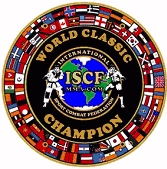
ISCF
WORLD
TOURNAMENT
The ONLY event the ISCF
Promotes and sanctions is the what was the first ever Amateur MMA Open
tournament (The Golden Gloves of MMA).
This event is called the
ISCF
World Classic Tournament.
This Tournament is where Amateur
MMA Athletes determine face to face in open competition who truly is the BEST
Amateur MMA fighters in the World.
The dynamic belts awarded for the OPEN
Class fighters on this event can be seen at right.
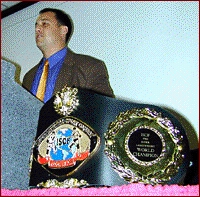
Mike Carlson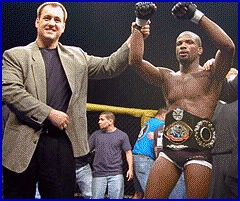
Mike
Carlson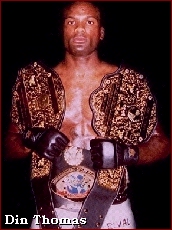
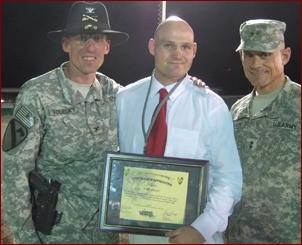
Andy Foster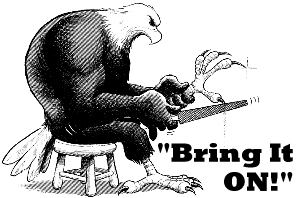
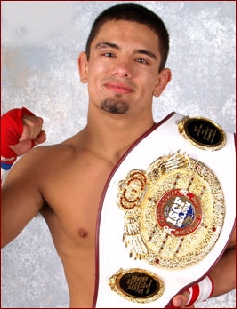
Danny Tims

SOME OF THE FIGHTERS KNOWN BY THE
ISCF
There have been thousands of fighters over the years that have fought on ISCF Sanctioned events. Many of them made their way to the pros and onto big events such as UFC, Strikeforce, the IFL and other great events. Some of them have ties to the ISCF Sister organization, the IKF (International Kickboxing Federation). See if you recognize any of these names below who are Pro MMA fighters linked in some way to the ISCF and or IKF.
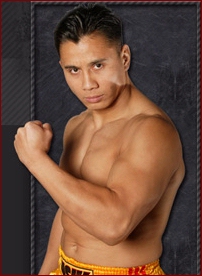
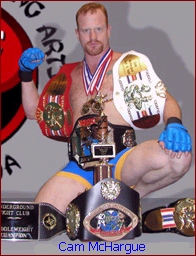
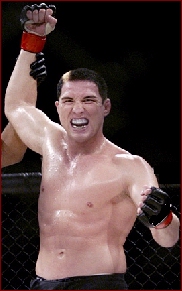
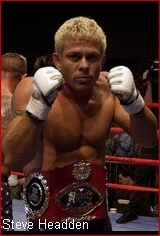
- Junior Assunção
- Brian Bowles
- Matt Brown: Current ISCF Champion.
- Chris Cariaso: ISCF Pro World Champion and ISCF USA Amateur Champion.
- Shonie Carter
- Mike Corey
- Tim Credeur
- Zak Cummings
- Jeff Curran
- Wagnney Fabiano
- Andy Foster: Former 2 Time ISCF Champion
- Travis Fulton: ISCF Champion and IKF Kickboxing Champion.
- Lee Gibson
- Forrest Griffin
- Melvin Guillard
- Clay Harvison
- Patrick Healy
- Jeremy Horn
- Chris Horodecki
- Abongo Humphrey
- Quinton Rampage Jackson: Had his first Amateur MMA fight on an ISCF Sanctioned bout in Memphis, Tennessee on Nov. 13th, 1999.
- Rob Kimmons
- Cung Le: IKF Pro World Champion
- Chuck Liddell: Former IKF Kickboxing Champion.
- Douglas Lima
- Ricardo Lamas: Current ISCF Champion.
- Duane Ludwig: Former IKF Kickboxing Champion.
- Anthony Macias
- Rory Markham
- Vladimir Matyushenko
- Charles McCarthy
- Jason Miller: Former ISCF Champion.
- Micah Miller
- Roy Nelson
- Bart Palaszewski
- Mike Pyle: Had his first Amateur MMA fight on an ISCF Sanctioned bout in Memphis, Tennessee on Nov. 13th, 1999.
- Jens Pulver
- Shannon Ritch: Former ISCF Champion.
- Ben Rothwell
- Rory Singer
- Tony Sylvester
- Louis Taylor
- Din Thomas: First ISCF World Champion.
- And Many, Many more...
"As a Neutral
Sanctioning Body for the Mixed Martial Arts the ISCF
can help you gain the
worldwide exposure your event deserves and the deserved credibility of a
True Mixed Martial Arts Event.
We hope to work with you on your next event."
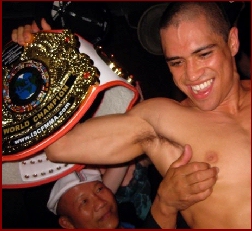
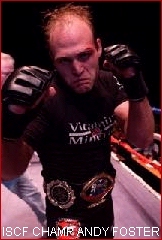
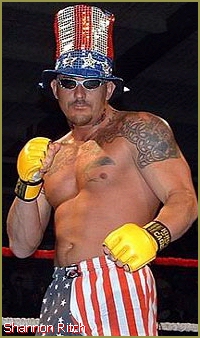
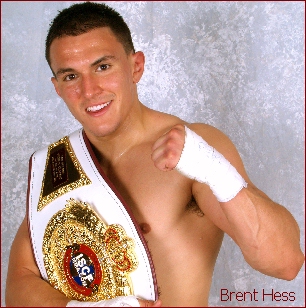
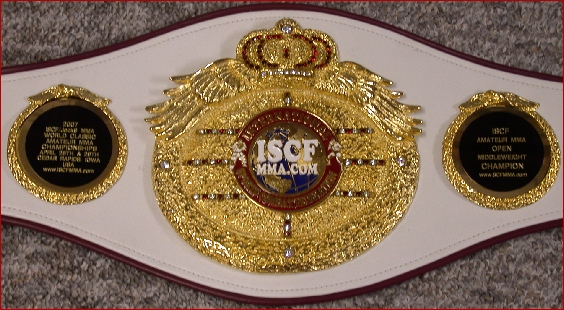
MIXED MARTIAL ARTS
HISTORY
Mixed martial arts (MMA) is a full contact combat sport that allows a wide variety of fighting techniques and skills, from a mixture of other combat sports, to be used in competitions. The rules allow the use of both striking as well as grappling techniques, both while standing and while on the ground. Such competitions allow fighters of different backgrounds to compete.
The roots of modern mixed martial arts can be traced back to various mixed style contests that took place throughout Europe, Japan and the Pacific Rim during the early 1900s. The combat sport of Vale Tudo that had developed in Brazil from the 1920s was brought to the United States by the Gracie family in 1993 with the founding of the Ultimate Fighting Championship. Professional MMA events had also been held in Japan by Shooto starting back in 1989. In due course the more dangerous Vale Tudo style bouts of the early UFCs were made safer with the implementation of additional rules, leading to the popular regulated form of MMA seen today. Originally promoted as a competition with the intention of finding the most effective martial arts for real unarmed combat situations, competitors were pitted against one another with minimal rules. Later promoters adopted many additional rules aimed at increasing safety for competitors and to promote mainstream acceptance of the sport.
The name mixed martial arts was coined by Rick Blume, president and CEO of Battlecade, in 1995. Following these changes, the sport has seen increased popularity with pay per view reach rivalling boxing and professional wrestling.
- Early History Timeline of Major Events
- Ancient Greece: Pankration
- Late 19th century: Hybrid martial arts
- Late 1880s: Early NHB and Mixed Style Contests
- 1920s: Early Vale Tudo and Gracie Challenge
- 1960s and 1970s: Bruce Lee and Jeet Kune Do
- 1970s: Antonio Inoki and Ishu Kakutougi Sen
- 1985: Shooto forms
- 1991: First Desafio (BJJ vs. Luta Livre) Event
- 1993: Pancrase forms
- 1993: UFC forms
- Mid/Late 1990s: International Vale Tudo (WVC, VTJ, IVC, UVF etc.)
- 1997-2007: PRIDE FC and UFC Era 2000 – New Jersey SACB develops Unified rules
- 1999: Creation of the ISCF: First non promoting regulatory body for Mixed Martial Arts.
- 2001: Zuffa buys UFC
- 2005: The Ultimate Fighter Debuts
- 2005: US Army begins sanctioning MMA
- 2006-Present : UFC dominance and international growth
- 2006: Zuffa buys WFA and WEC
- 2006: UFC 66 generates over a million PPV buys
- 2007: Zuffa buys PRIDE FC
- 2008: EliteXC: Primetime gains over 6.5 million viewers on CBS
- 2009: Strikeforce holds 1st major card with female main event
- 2011: WEC merged with UFC
- 2011: Zuffa buys Strikeforce
MMA HISTORY
During the Greco-Roman era there existed an ancient Olympic combat sport, known as Pankration which featured a combination of grappling and striking skills, similar to modern Mixed Martial Arts. This sport originated in Ancient Greece and was later passed on to the Romans.
No-holds-barred fighting reportedly took place in the late 1880s when wrestlers representing a huge range of fighting styles, including various catch wrestling styles, Greco-Roman wrestling and many others met in tournaments and music-hall challenge matches throughout Europe. In the USA the first major encounter between a boxer and a wrestler in modern times took place in 1887 when John L. Sullivan, then heavyweight world boxing champion, entered the ring with his trainer, Greco-Roman wrestling champion William Muldoon, and was slammed to the mat in two minutes. The next publicized encounter occurred in the late 1890s when future heavyweight boxing champion Bob Fitzsimmons took on European Greco-Roman wrestling champion Ernest Roeber.
Another early example of mixed martial arts was Bartitsu, which Edward William Barton-Wright founded in London in 1899. Combining judo, jujutsu, boxing, savate and canne de combat (French stick fighting), Bartitsu was the first martial art known to have combined Asian and European fighting styles, and which saw MMA-style contests throughout England, pitting European and Japanese champions against representatives of various European wrestling styles.
The history of modern MMA competition can be traced to mixed style contests throughout Europe, Japan, and the Pacific Rim during the early 1900s. In Japan these contests were known as merikan, from the Japanese slang for "American [fighting]". Merikan contests were fought under a variety of rules including points decision, best of three throws or knockdowns, and victory via knockout or submission. The Gracie family's vale tudo martial arts tournaments in Brazil starting in the 1920s; and early mixed martial arts-themed professional wrestling matches (known as Ishu Kakutougi Sen in Japan) in the 1970s.
As the popularity of professional wrestling waned after World War I it split into two genres: "shoot", in which the fighters actually competed, and "show", which evolved into modern professional wrestling.
In 1936, heavyweight boxing contender Kingfish Levinsky and veteran professional wrestler Ray Steele competed in a mixed match, which Steele won in 35 seconds.
In the late 1960s to early 1970s the concept of combining the elements of multiple martial arts was popularized in the west by Bruce Lee via his system philosophy of Jeet Kune Do. Lee believed that "the best fighter is not a Boxer, Karate or Judo man. The best fighter is someone who can adapt to any style, to be formless, to adopt an individual's own style and not following the system of styles." In 2004 UFC President Dana White would call Lee the "father of mixed martial arts" stating: "If you look at the way Bruce Lee trained, the way he fought, and many of the things he wrote, he said the perfect style was no style. You take a little something from everything. You take the good things from every different discipline, use what works, and you throw the rest away".
MODERN MMA
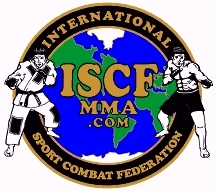
Mixed Martial Arts (MMA) competitions were introduced in the United States with the first Ultimate Fighting Championship (UFC) in 1993. The sport gained international exposure and widespread publicity in United States in 1993, when Brazilian Jiu-Jitsu fighter Royce Gracie won the first Ultimate Fighting Championship tournament, subduing three challengers in a total of just five minutes, sparking a revolution in martial arts. Meanwhile Japan had its Shooto also called Vale Tudo in 1985 where fighter Rickson Gracie won the tournaments in 1994 and 1995, which continued interest in the sport resulting in the creation of the Pride Fighting Championships in 1997, where again Rickson participated and won.
In 1999, the International Sport Combat Federation – ISCF - was the first neutral, non promoting regulatory - Sanctioning Body for the Mixed Martial Arts (MMA). Until this time, MMA event promotional companies had their own officials. As a sister organization for Mixed Martial Arts to the IKF, International Kickboxing Federation the ISCF neutrally regulates safe and fair rules and regulations and helps provide exposure and opportunities for local, regional, national and international competition among amateur and professional mixed martial arts fighters, trainers, promoters and officials. The ISCF is still the only MMA Sanctioning body with both Professional and Amateur mixed Martial Arts Rankings.
On August 26th, 2000, at the Augusta-Richmond County Civic Center in Augusta, Georgia, USA, the ISCF crowned it's first professional ISCF World Champion, Din Thomas when he defeated Jens Puiver by heel hook at :35 seconds of round 2.
On September 5th, 2009 Brigade Command and the Multi National Corps - Iraq approved the first ever Sanctioned Pro/Am Mixed Martial Arts event for the 25th Infantry Division. The ISCF sent an officials team to sanction the event, "A Fight Night For Heroes" in Mosul, Kuwait, Iraq. The fight card featured 13 amateur and 3 pro bouts of active duty Military fighters. Along with the ISCF, the event was made possible by Armed Forces Entertainment, Xtreme Couture MMA, Federal Express, Combat Sports International, Club Ju Jitsu, The Fight Party, D&D;Productions and Casca-Grossa.
As of December 2011, the ISCF had sanctioned events and or ISCF Title bouts in Georgia, Tennessee, Missouri, Nevada, Idaho, Louisiana, Virginia, Washington DC, Oklahoma, New Jersey, Wyoming, South Dakota, Montana, Nebraska, Minnesota, Wisconsin, Iowa, Illinois, Indiana, Alabama, Arkansas, North Dakota, Michigan, Massachusetts, Kansas, Colorado, Arizona, New Mexico, Texas, Florida, Ohio, Connecticut, South Carolina, North Carolina, Pennsylvania, and California along with Canada, Mexico, England, Scotland, Australia, India, Iran and Iraq.
Both the ISCF and IKF are under the unbrella of the organization, International Fight Sports, a worldwide fight sport organization.
The movement that led to the creation of the UFC and Pride was rooted in two interconnected subcultures. First were the vale tudo events in Brazil, followed by the Japanese shoot wrestling shows. Vale tudo began in the 1920s with the "Gracie challenge" issued by Carlos Gracie and Hélio Gracie and upheld later on by descendants of the Gracie family.
STATE COMMISSION REGULATION
After the ISCF had started in 1999, State Commissions were introduced to what they were told were the "Unified MMA Rules." These rules were simply improvements for safety and fairness from the origional UFC rules, regulated by the UFC's own officials. These rules came to be from what the UFC started with along with input of many others who loved the sport of Mixed Martial Arts. These rules also developed from the lessons learned from fight sport regulating from the early ISCF Sanctioned events and other MMA events around the world. However what many reading this don't know is exactly where the "Unified MMA Rules" came from and when you hear the facts, you may be a bit surprised.
Many have "Claimed" to be the founders of the "Unified MMA Rules" but the truth is, none of those "Claiming" the title can really take the credit. Years before the States regulated MMA, a man named Rob Lynch was the Executive Director of the California State Athletic Commission. One of their state boxing/kickboxing officials was an individual named Dan Stell. (Right) who ended up playing one of the most hidden parts of the future evolution of MMA as we all know it today.
Lynch saw the potential for MMA as a fight sport both economically and fan wise for the State of California and beyond. So Lynch would take Stell, who had an extensive martial arts background already, to watch what was called back then "Underground MMA Shows". Over time, the two compiled notes and rules from all the various MMA Promotions. When they had compiled enough of them, Lynch turned over the massive amount of paperwork to Stell with one request... "Unify what we have here for California to regulate this as a legal sport."
Stell spent weeks on the project and soon came back to Lynch with a unified set of rules comprised from all the different promotional companies. From there, Lynch took the "Unified MMA Rules" to the California State Commission to vote on them to be added in as rules for the sport of Mixed Martial Arts for the State of California at a CSAC Meeting in April of 2000. What surprised Lynch, and many others was that although the rules were approved, the sport was not. The board claimed that the sport fell outside the jurisdiction of the CSAC. However, in reality they came to the conclusion that the sport would be too costly for the CSAC to fund.
This of course took the wind out of Lynch's sails and basically made him feel he and Stell had did a lot of work for nothing. So, Lynch mailed off the "Unified MMA Rules" that Stell had created to other commissions, and other MMA associates and the rest is history... Several others "CLAIMED" they founded the unified MMA Rules, but in reality, they were given a "GIFT" created by two pioneers of the sport, Rob Lynch and Dan Stell.
In September 2000, the New Jersey State Athletic Control Board began to allow mixed martial arts promoters to conduct events in New Jersey using the rules Lynch and Stell put together. The intent was to allow the NJSACB to observe actual events and gather information to establish a comprehensive set of rules to effectively regulate the sport. On April 3, 2001, the NJSACB held a meeting to discuss the regulation of mixed martial arts events. This meeting attempted to unify the myriad of rules and regulations which have been utilized by the different mixed martial arts promotional companies and regulatiry bodies such as the ISCF. At this meeting, the proposed uniform rules that Lynch and Stell first pioneered for state regulation were agreed upon by the NJSACB, several other regulatory bodies, numerous promoters of mixed martial arts events and other interested parties in attendance. At the conclusion of the meeting, all parties in attendance were able to agree upon a uniform set of rules to govern the sport of mixed martial arts.
The rules adopted by the NJSACB have become the de facto standard set of rules for professional mixed martial arts across North America. On July 30, 2009, a motion was made at the annual meeting of the Association of Boxing Commissions to adopt these rule as the "Unified Rules of Mixed Martial Arts". The motion passed unanimously.
In November 2005, recognition of mixed martial arts effectiveness came as the United States Army began to sanction mixed martial arts with the first annual Army Combatives Championships held by the US Army Combatives School.
MMA GROWING
The
sport reached a new peak of popularity in North America in the December 2006
rematch between then UFC light heavyweight champion Chuck Liddell and
former champion Tito Ortiz, rivaling the PPV sales of some of the
biggest boxing events of all time, and helping the UFC's 2006 PPV gross
surpass that of any promotion in PPV history. In 2007, Zuffa LLC, the
owners of the UFC MMA promotion, bought Japanese rival MMA brand Pride
FC, merging the contracted fighters under one promotion and drawing
comparisons to the consolidation that occurred in other sports, such as the
AFL-NFL Merger in American football.
Since the UFC's explosion into the mainstream media in 2006 and their 2007 merger with Pride FC and purchase of WEC, few companies have presented significant competition. The most notable contenders include (or included), the IFL (ceased operations in early 2008), EliteXC (ceased operations in late 2008), Strikeforce (purchased by the parent company of the UFC in early 2011), and the Bellator FC.
On April 30, 2011, in Toronto, Ontario, Canada the UFC set a new North American MMA attendance record, with UFC 129 drawing 55,724 at the Rogers Centre, the event also set a new MMA world record for the highest paid gate at $12,075,000 and is the highest gate in Toronto for any event, UFC 129 may also hold the gate record for all of Canada, however gate records for the opening and closing ceremonies at the 2010 Winter Olympics were not reported.
EVOLUTION OF FIGHTERS
As
a result of an increased number of competitors, organized training camps,
information sharing, and modern kinesiology, the understanding of the
combat-effectiveness of various strategies has been greatly improved. UFC
commentator Joe Rogan claimed that martial arts evolved more in the ten
years following 1993 than in the preceding 700 years combined.
The high profile of modern MMA promotions such as UFC and Pride has fostered an accelerated development of the sport. The early 1990s saw a wide variety of traditional styles competing in the sport. However, early competition saw varying levels of success among disparate styles.
In the early 1990s, practitioners of grappling based styles such as Brazilian Jiu-Jitsu and Wrestling dominated competition in the United States. Practitioners of striking based arts such as Boxing, Kickboxing, and Karate who were unfamiliar with submission grappling proved to be unprepared to deal with its submission techniques. Shoot wrestling practitioners offered a balance of amateur wrestling ability and catch wrestling-based submissions, resulting in a well-rounded skillset. The shoot wrestlers were especially successful in Japan. As competitions became more and more common, those with a base in striking arts became more competitive as they cross trained in arts based around takedowns and submission holds, leading to notable upsets against the then dominant grapplers. Likewise, those from the varying grappling styles added striking techniques to their arsenal. This increase of cross-training resulted in fighters becoming increasingly multi-dimensional and well-rounded in their skills.
The new hybridization of fighting styles can be seen in the technique of "ground and pound" developed by wrestling based UFC pioneers such as Dan Severn, Don Frye and Mark Coleman. These wrestlers realized the need for the incorporation of strikes on the ground as well as on the feet and incorporated ground striking into their grappling based styles. Mark Colemans stated at UFC 14 his strategy was to "Ground him and pound him" which may be the first televised use of the term ground and pound.
Since the late 1990s both strikers and grapplers have been successful at MMA though it is rare to see any fighter who is not schooled in both striking and grappling arts reach the highest levels of competition.
Or you can just start your own
sanctioning body and let just anyone be a Champion...
CLICK HERE!
ISCF World
Headquarters
MAILING: P. O. Box 1205, Newcastle, CA, 95658, USA
PHYSICAL
ADDRESS: 9250 Cypress Street, Newcastle, CA, 95658, USA
(916) 663-2467, Fax:
(916) 663-4510 or
info@iscfmma.com
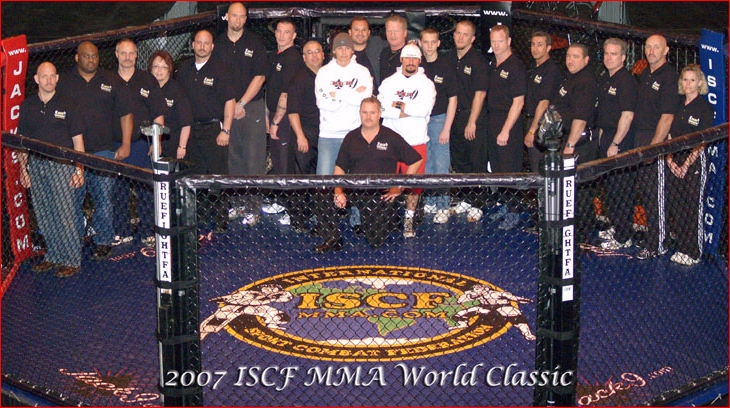
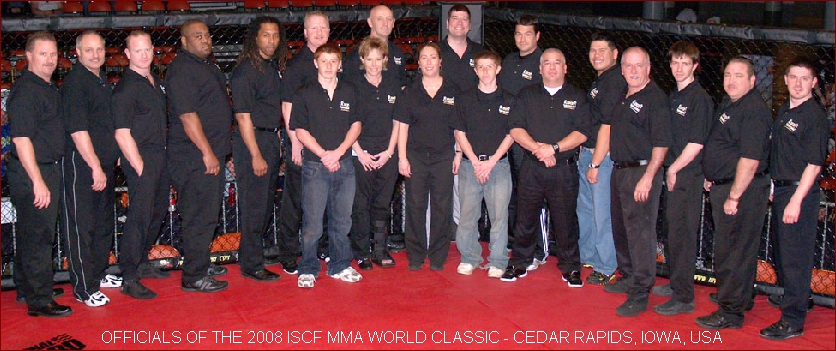
ISCF HOME-
MMA NEWS -
EVENTS - RANKINGS - SANCTIONING -
RULES - WEIGHTS - GYMS - JOIN - CONTACT
PAST NEWS - ISCF CHAMPIONS -
MERCHANDISE -
PHOTOS - LEGAL - LINKS - HISTORY - IKF
KICKBOXING
